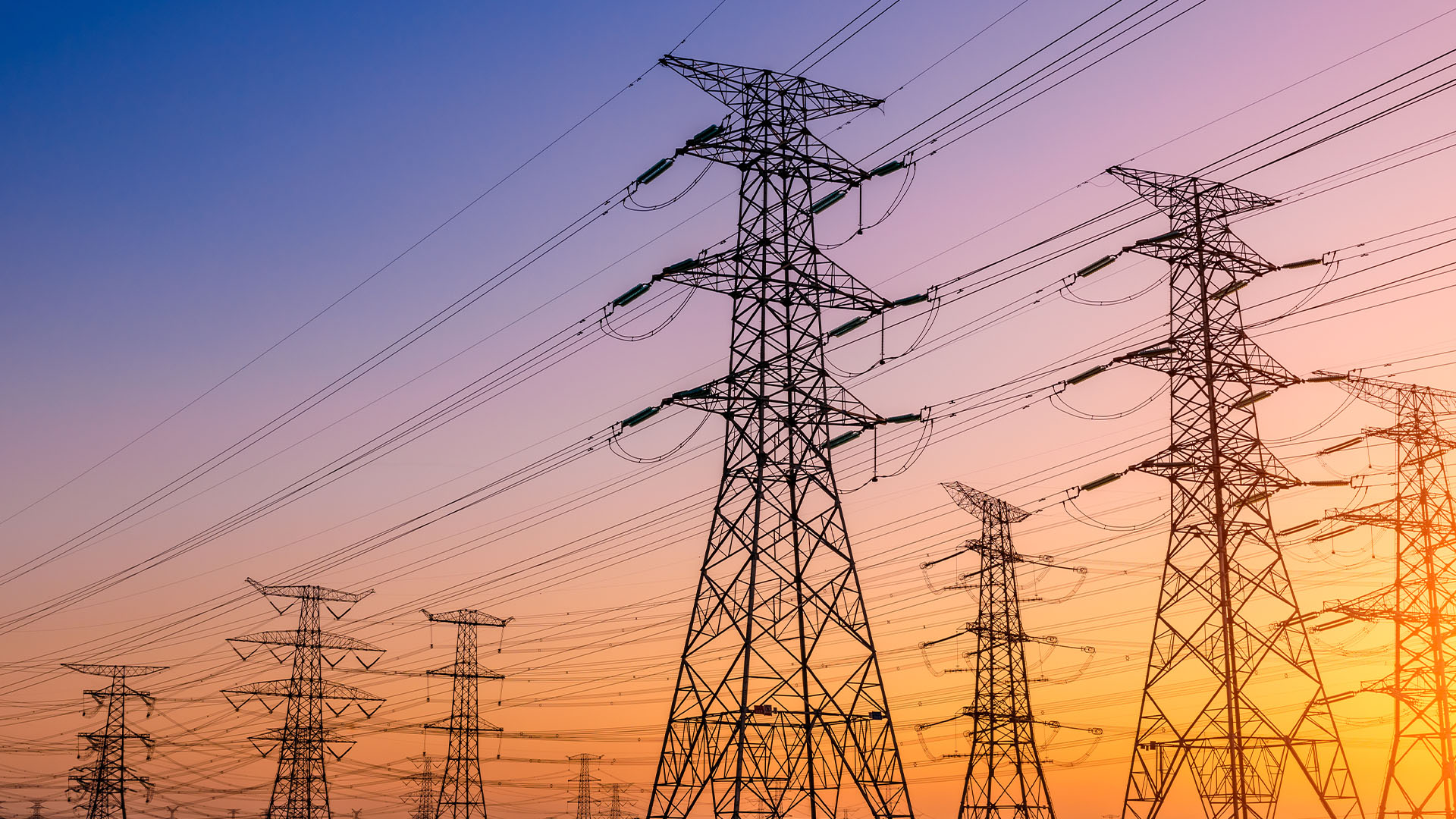Southern Africa is a key focus of attention at the present time, as it faces a perfect storm of an energy emergency due to hydropower generation being severely impacted by reduced water levels due to droughts whilst the demand of its regional miners for clean baseload power rapidly accelerates. Reduced power generation as a result of chronically adverse weather conditions over recent years, coupled with increasing population and high urbanisation rates, have strained the power industry in the region. Over 50 per cent of the population in Southern Africa still do not have access to electricity. This part of the global population continues to suffer a disproportionate impact of climate change and, coupled with a $170 billion infrastructure financing gap, this leaves countries in Southern Africa needing to rapidly adjust their energy systems to respond to the implications of climate change and capitalise on the demands of regional mining companies whilst ensuring their broader economy has a dependable power supply system.
Recently, severe droughts as a result of El Niño weather conditions in the 2023 to 2024 rain season impacted Southern Africa, forcing some countries like Zambia to declare a national emergency and disaster in February 2024 as a result of severe droughts. As at May 2025, Zambia was facing up to 17 hours per day of electricity load shedding, while in recent months, load shedding in Zimbabwe (which also heavily relies on power generation from the Kariba dam shared with Zambia) increased to about 20 hours per day, with the Kariba dam falling to record low levels. This extreme situation has disrupted business operations for many commercial and industrial consumers, increased business costs, as well as severely affecting domestic users and public operations, and securing a robust power supply has become a critical agenda item.
There is a huge demand for power in Southern Africa among commercial and industrial users, especially mining companies across the region, which account for around 50 per cent of energy demand and are increasingly shifting to being producers of green minerals and derivative products. The energy needs in the region are expected to increase even more due to the high demand for critical and rare earth minerals found in the region which are essential in the wake of the energy transition, with the Copperbelt in Zambia and the DRC a clear example of this. A reliable, efficient and integrated regional power system, supported by a well-regulated electricity open access market will be necessary for the development of a competitive and liquid energy market which can be accessed by commercial and industrial users across the region enabling them to retain flexibility and control over their energy supply portfolio.
Southern Africa’s renewables potential also remains largely untapped with only one per cent of potential capacity being used, despite the region having the highest solar and wind potential in Sub-Saharan Africa. This energy landscape creates opportunity for investment in projects across Southern Africa, with certain developers taking on additional development risk in order to capitalise on a strong offtake market and enable rapid availability of renewable power. However, many challenges continue to hinder investment in the power sector such as unpredictable procurement processes, congestion or lack of transmission and distribution infrastructure, and complexity of licensing and permitting processes which are not harmonised. These challenges significantly increase where regional interconnection is concerned.
In this article we focus specifically on the status of the electricity open access market in South Africa and Zambia, and how participation in an integrated regional power market by private sector developers and funders is a key driver to meeting the energy deficit by harnessing Southern Africa’s power potential and fostering the much-needed electricity infrastructure development in the region through private capital.
Overview of the Southern Africa energy market
The Southern Africa Power Pool (SAPP) has twelve member states and an installed generation capacity of about 82 GW, reaching 50 GW at peak demand. Public utility electricity companies are the key players in the Southern Africa energy market, which include Eskom of South Africa, Botswana Power Corporation, Zimbabwe Electricity Supply Authority, ZESCO Limited in Zambia (ZESCO), NamPower in Namibia, Societe Nationale d'Electricite in the Democratic Republic of Congo (DRC) and Electricidade de Mozambique, among others. The public electricity companies have historically been engaged in all aspects of electricity generation, transmission, distribution and supply both locally and to surrounding SADC countries through SAPP. However, SAPP is evolving and there is growing membership from private market participants such as Copperbelt Energy Corporation PLC, Africa GreenCo, Solarcentury and Enterprise Power.
The main form of power trading under SAPP is the bilateral market under which power producers and consumers directly agree their mutual trading arrangements specifying the volumes and tariff (usually through some form of power supply agreement), and has mainly been between national utilities. SAPP also operates forward physical markets under which competitive power trading for future delivery on a daily, weekly or monthly basis is carried out1. A balancing market has also recently been introduced to provide balancing services in real time. Although power trade under SAPP has historically been facilitated through national utilities, the scope of power trade is expanding with the entry of market participants. This has led to the creation of private sector opportunities for increasing interconnector transmission capacity and improving power quality, availability and supply.
Focus on Zambia
Zambia is one of the few African countries that allows private entities to obtain licences and own assets for transmission of electricity and to privately carry out power trading. The Electricity (Open Access Regulations) 2024 (the Open Access Regulations) were published on 19 July 2024 and allow qualifying market participants to access a transmission system or distribution system operated by a transmission network service provider or a distribution network service provider on a non-discriminatory basis, thereby creating open grid access.
Open grid access gives eligible electricity traders, suppliers, system users and consumers the right to use transmission and distribution systems on a non-discriminatory basis and allows participants to directly engage in power trading, regardless of who owns the system. The Open Access Regulations create three categories of rights for open grid access and use by electricity traders, suppliers, system users and consumers. Firstly, long term open access is available for a period exceeding five years and users in this category have priority of participation. Second in the order of priority is medium term open access which applies to participation for a period of three months to five years. Lastly, short term open access is available for a participation period of up to three months.
To qualify for open access, participants will be required to be licensed by the Energy Regulation Board and fall under one of the following categories: (a) power trading license holder with a trading capacity of at least 1 MW; (b) power supplier with an installed generating capacity of at least 1 MW; or (c) power consumer with a consumption capacity of at least 1 MW. As part of the application for open access, qualifying participants will also need to submit further information including proof of financial viability, details of available infrastructure and communication systems, and the quantum of power to be transmitted or wheeled. Some of the key requirements for participation in open access include entry into a participation and balancing agreement with ZESCO as system operator, and provision of security by the open access user to the system operator to cover energy imbalance requirements.
ZESCO is in the process of developing guidelines and procedures for the operation of the transmission system under the Open Access Regulations. These were expected in early 2025 but are yet to be published. The guidelines are expected to include the transmission pricing methodology and the process for facilitation of bilateral trades, and so will be an essential part of the implementation of the Open Access Regulations.
While a clear regulatory framework for open access is a step in the right direction for regional power integration, there are still challenges which will require ongoing adjustments to the regime, such as better enablement of private sector investment in the improvement and expansion of the grid system in Zambia and interconnection with the DRC. Innovative structures to finance and implement these improvements and expansions are increasing, with mining companies increasingly playing a supportive role alongside power traders and developers.
A further key challenge which will need to be addressed is the ability of ZESCO to operate as an independent system operator. As mentioned below, having an independent system operator as part of an open access framework is one of the key lessons which Zambia can learn from South Africa.
The Open Access Regulations are a game changer for the Zambian power market, aimed at opening up the market for increased generation, transmission and distribution of electricity and harnessing and capitalising on its importance to the Southern African power system.
Early movers - lessons learnt from South Africa
South Africa initiated its transition towards an open electricity market with the Electricity Regulation Act 4 of 2006, which established the open market’s legal framework. Regulation and procurement of electricity in South Africa is principally governed by the Electricity Regulation Act 4 of 2006 as amended by the Electricity Regulation Amendment Act 38 of 2024 (ERA).
The development of the South African electricity market remains limited long after the open access market was created. Inadequate transmission infrastructure is one of the biggest barriers to market development. Related to this is the powers and functions of the National Energy Regulator (NERSA) and the National Transmission Company of South Africa SOC LTD (NTCSA). Crucially, ERA establishes the duties, powers and functions of the Transmission System Operator SOC Limited (TSO) to provide for an open market platform which allows for competitive electricity trading. Until the TSO is established, for no longer than five years, the NTCSA is deemed to be the TSO and it must its perform the duties, powers and functions.
Accordingly, the NTCSA owns and operates the South African national transmission system, oversees the enhancement of the grid, provides energy market services, and manages international trading. The NTCSA is being put forward as a catalyst for improvements and upgrades within the South African transmission infrastructure, and is licensed to import and export electricity, sell and procure electricity and enter into trading arrangements in the SAPP markets.
On 28 March 2025, the Minister of Electricity and Energy issued a Ministerial Determination under the ERA, to address the urgent need for improved electricity supply infrastructure in South Africa. This determination seeks to secure South Africa's energy supply by introducing the Independent Transmission Providers Programme (ITP Programme). The ITP Programme is projected to add up to 3,222MW to the South African grid network. On 3 April 2025, the Minster issued a notice to invite written comments on the proposed Electricity Transmission Infrastructure Regulations.
Another important aspect addressed by the ERA is the introduction of a mechanism for market pricing, which sets out the principles for pricing, charges and tariffs. One of the principles for pricing is that there will be need to factor in reasonable returns which are proportionate to the risk of developers. The ERA also distinguishes between tariffs which are set or approved by the regulator (such as network charges) and those which arise from a competitive market and are subject to direct bilateral agreements between market participants (such as long term and short-term power purchase and power supply agreements).
South Africa's reforms under the ERA and the introduction of the ITP Programme emphasise the importance of robust regulatory frameworks and infrastructure development. The ITP Programme signifies a major advancement in addressing transmission system inadequacies and fostering a competitive electricity market.
With the NTCSA being the owner and operator of the national transmission infrastructure, together with the commercial approach to pricing established through ERA, it is likely to result in the fruition of more “bankable” projects and incentivise increased private investment in South Africa. The issues sought to be resolved by the ERA can be a point of reflection for new open access markets like Zambia as they develop reforms.
Harmonisation of regulations for cross border power trade
Stability and efficiency in a regional electricity market is not achievable without a harmonised regulatory framework across the participating countries. As seen in the SADC region, only two countries have an open access electricity market. There are also many complex licensing requirements across the region, which make it difficult to facilitate regional power trade, inhibiting much needed regional interconnection. One initiative that seeks to address this issue is the Africa Single Electricity Market (AfSEM), which was launched in 2021 under the African Union. AfSEM is aimed at facilitating the sustainable development of a single integrated continental electricity market and is based on the Africa Continental Free Trade Agreement. A strategy for the development of a harmonised regulatory framework of the electricity market in Africa has been published as part of the AfSEM, which has been broken down into continental and regional initiatives, in order to identify areas required for achieving regulatory harmonisation, and this includes key needs for SADC and SAPP.
Many thanks to the contributors to this article:
CJ Grey, Senior Associate, South Africa
Sharon Sakuwaha, Moira Legal Practitioners, Zambia






